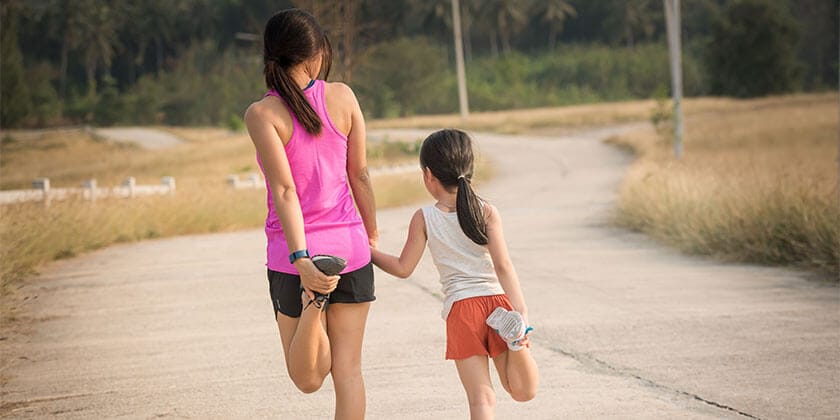Be your own body mechanic

It can be devastating to develop a love of running, only to develop an injury that means you have to give it away. Alex Bell is a physiotherapist at The Running Room where he offers advice and assessments to keep runners on the road. Here, he explains how to be your own body mechanic.
According to Sports Medicine Australia, up to 70 per cent of runners will get injuries with the majority to the knee, followed by the feet and ankles, calves and hips.
The good news is that there are ways you can reduce your chances of forming part of these statistics.
Strength in training
“Strength training has been shown to have positive effects in reducing injury risk and increasing performance” says Alex, adding that a review of 25 clinical trials with more than 26,000 participants concluded that strength training reduced overuse injuries by nearly 50 per cent and sports injuries to less than a third.
Runners are often reluctant to lift weights but think about what happens when you run – you constantly apply a repetitive load to your body tissue. The calf complex alone is exposed to up to six to nine times your body weight force with every step, while your quads (those big muscles at the front of your thighs) take four to six times your body weight. Slow, heavy resistance training is also the best way to keep tendons healthy and able to store and release energy.
Alex recommends the following exercises, aiming for three sets of 8 – 12 repetitions. Anyone wanting more advanced running-specific strength training, should seek professional advice.
- Calf raises: Aim for single leg raises and add an external weight once you’ve built up the strength. You can do this at home by wearing a back pack with books or water bottles inside.
- Squats: Get an expert to check your technique. You need to sit back so your knees don’t come over your toes. Start with bodyweight squats and then add weights. Once you’ve built up your strength progress to single leg squats.
- Bridge: Start with a double leg bridge, lying on your back on the floor then lifting your hips, keeping thighs in line with the torso and knees in line with hips and shoulders. A great exercise for runners is to progress to alternate marching, so lifting one leg off the ground whilst maintaining a level pelvis.
- Step ups: Start on a small step focusing on driving with the front leg on the step rather than momentum. Stay tall and control your descent from the step.
Alignment and gait
Getting an expert to assess your running may seem like an unnecessary cost initially but it can have profound effects on performance and loading, make you feel lighter, faster and more efficient and can help prevent injury or sort out existing niggles.
An expert will look at how you run from all angles observing variables such as how your foot strikes the ground, the angle of your knee during foot strike, whether you lean forward or remain very upright and how much you bounce up and down as you run. Other important factors include trunk stability, whether knees drop in our out, the position of the foot and ankle and hip stability.
Specialists, such as The Running Room in Clovelly, use an instrumented treadmill which is equipped with a force plate under the belt. This gives an insight into step length, foot rotation, ground contact times, cadence and peak force.
Stretching
Aim for a dynamic stretching routine before running. This should involve movements that mimic the task at hand in a controlled way. For running, this could include marching type drills or A-skips – a favourite amongst runners as it helps develop lower-leg strength while encouraging knee lift and promoting an efficient foot strike. Basically, it involves skipping forward, lifting the lead knee to waist height while keeping the back leg straight as you come off your toe. Focus on striking the ground with your mid foot or forefoot. Practice at walking pace first to get the motion right.
If static stretching works for you, perform it after the activity when muscles are warm.
Real Insurance is proud to sponsor the Sydney Harbour 10k and 5k race, to take part in this spectacular event register now.
24 Jun 2019